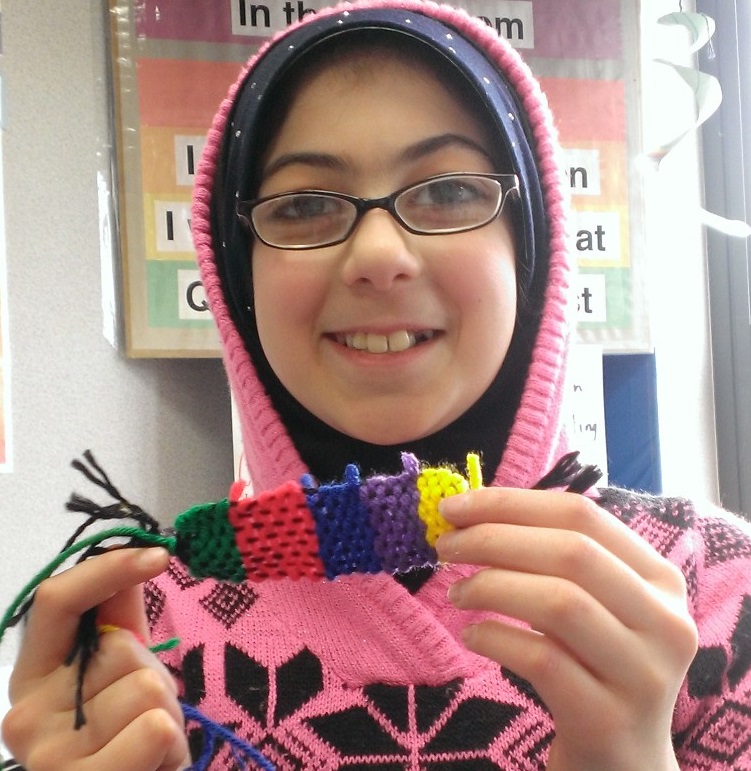Art assignments are more than mere projects, they are holistic learning opportunities in which art creation is just one aspect of the overall learning experience. These experiences can include one-on-one discussion, class discussion, reading, writing, art creation, experimentation, movement, singing, and reflection. The product of these experiences—the “art”—demonstrates a student’s understanding of concepts, vocabulary, and craftsmanship. Below are a few examples of past projects.
Australian Aboriginal Dot Painting
Inspired by the dream paintings of the Papunya Aborigines of Australia, students created dot paintings of their journeys and dreams. Each student wrote out a memory of a dream or a trip he or she experienced, then translated the important words into Aboriginal symbols. The symbols were arranged into compositions and the best composition was chosen. That composition was drawn with a pencil and then painted with the flat end of a pencil. A limited color palette keeps each image in balance. Many parents have told me that they have had these paintings framed.


Cram Line Designs
Fifth grade students started out the school year with an emphasis on line, detail, craftsmanship and pattern. Students began by writing their names on paper, then slowly “crammed” lines together to camouflage their names in plain sight. Colorful borders were added to the exterior. Cram line designs can easily be made at home. All you need is a pencil and some paper!

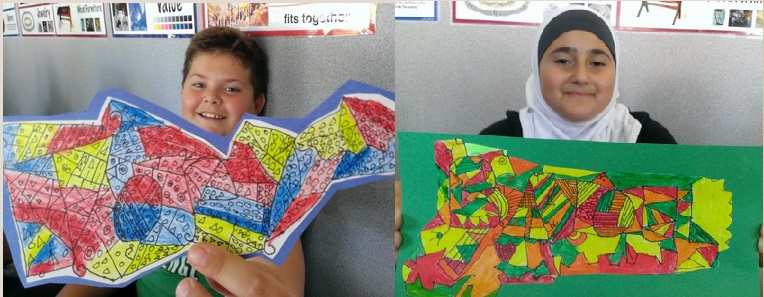
Personal Coat of Arms
Originating in the Medieval era, a coat of arms is an arrangement of bearings, or images, often depicting on and around a shield, symbolizing family ancestry and distinctions. Each student created a list of important people, objects, animals, and ideas, and designed an arrangement of these elements into a coat of arms composition. Each coat of arms is subsequently recreated as a clay relief sculpture.


Students create and write about a coat of arms full of symbols about their families

Each student creates a clay relief sculpture of their coat of arms. A background base supports the sculpture and holes are added to the corners
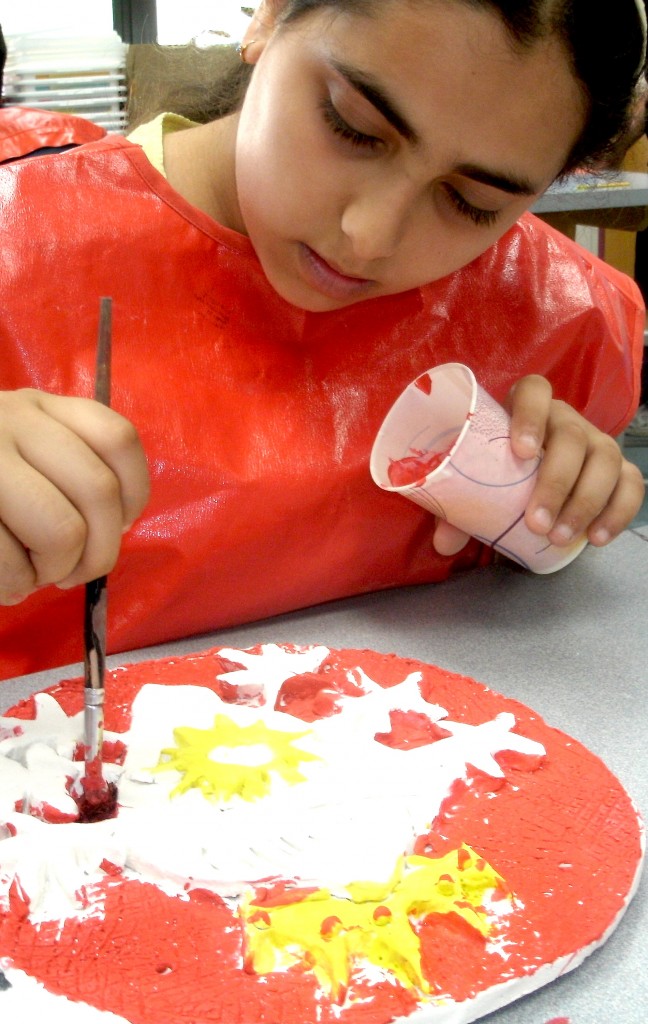
After the clay is fired, students used glaze or paint to color their ceramic pieces
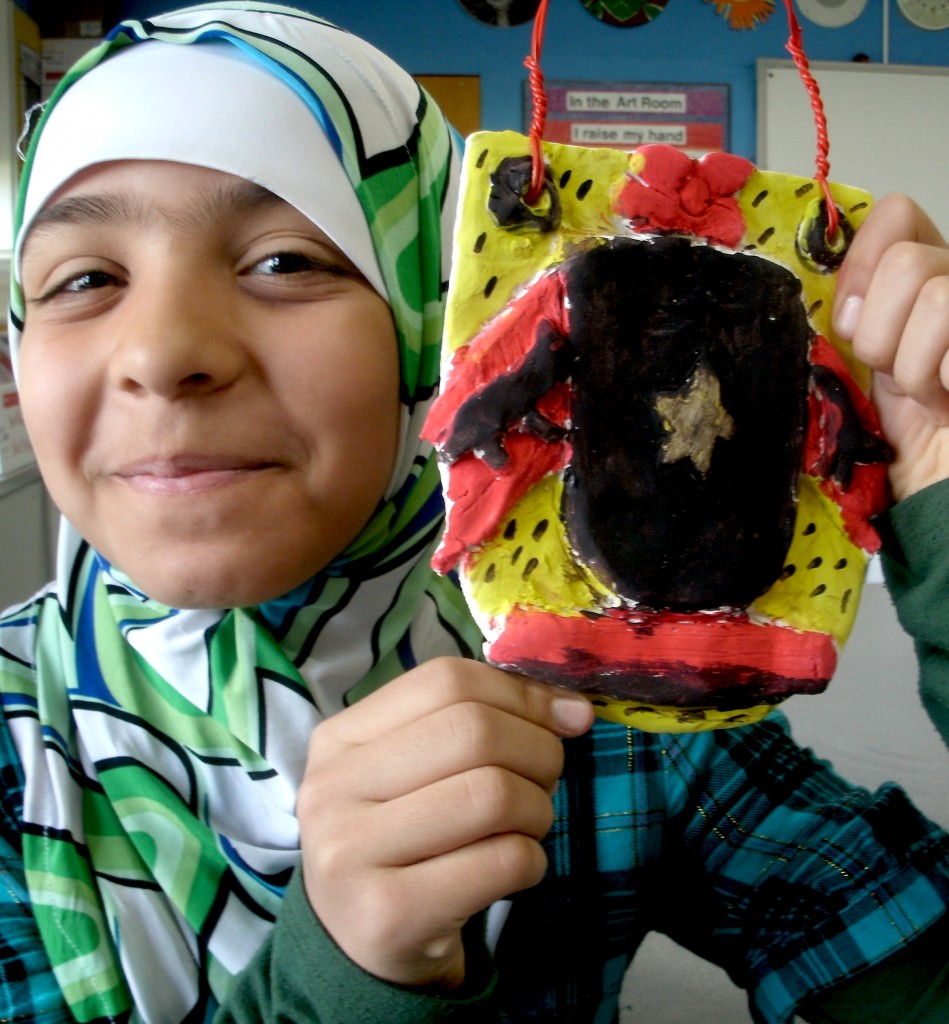
Wires are strung through holes in the clay, enabling their artwork to be hung on the wall
Decorative Plaster Masks
Masks are interesting to people of all ages. After learning about masks and discussing their usage, students used plaster and paint to create their own.


Imaginary Countries
A child’s interests, aspirations, and impressions reveal themselves through their artwork. By imagining, designing, and creating a map of their own fictional countries, our students are displaying what is important to them in the real world, and how they’d like the world to be.
Students thought about, discussed, and answered numerous questions about what their own imaginary country would be like, while also learning about the standard features on maps such as projections, compass rose, scale, and a key or legend. The maps were created with pencil, water color paint, markers, and colored pencils, with the assistance of plastic shapes, rulers, and a healthy imagination.
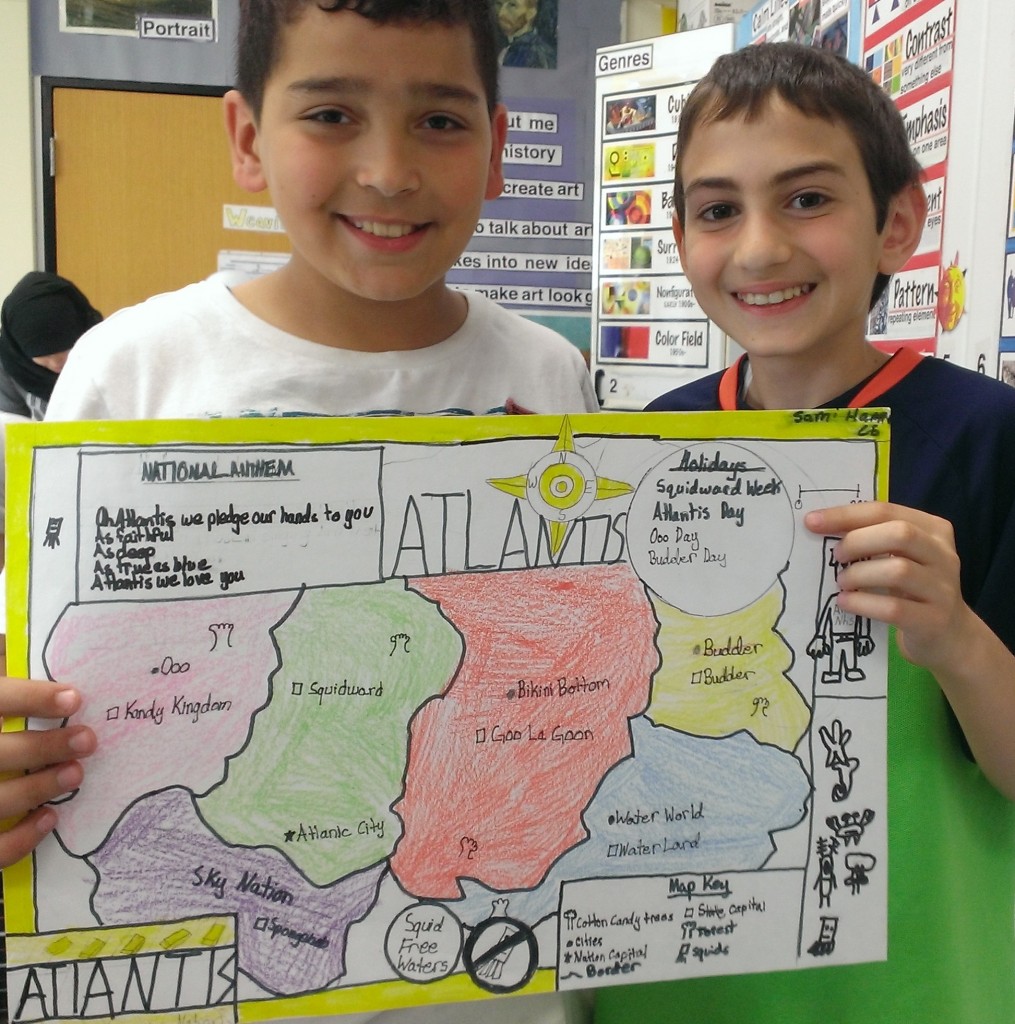
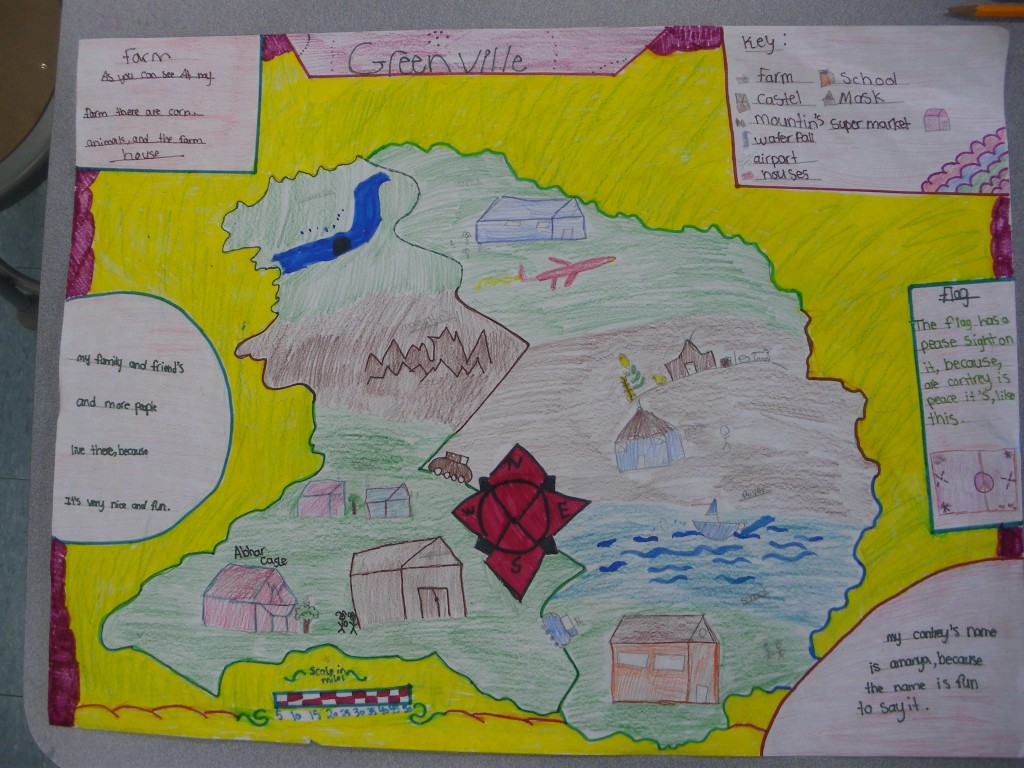
Paul Klee Cityscape
Students created their own versions of cityscapes inspired by the artist Paul Klee. These cityscapes focused on the same design principles and color theory as Klee: contrast, geometric shapes, warm and cool color dominate compositions, and saturated colors.

Grid Self Portraits
Students learned how to draw a replica of an image by dividing it up into a grid and focusing on one square at a time. Now any picture can be copied, it just takes some patience and practice!


Yarn Weaving by Ms. Ashley
Students learned how use a simple loom to create a colorful yarn weaving. Different colors of yarn were chosen to represent different members of each student’s family. Some students even turned their weavings into bracelets!
Totem Poles
Students used recycled objects to create their own versions of totem poles. Each totem represented a part of each student’s personality, and was combined together with others to create a totem pole. Together, the totem poles symbolized our diverse and wonderful class.

![]()
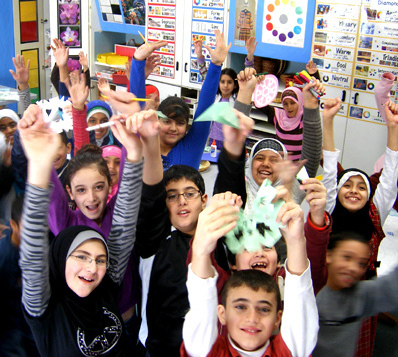
Fifth graders cheering
